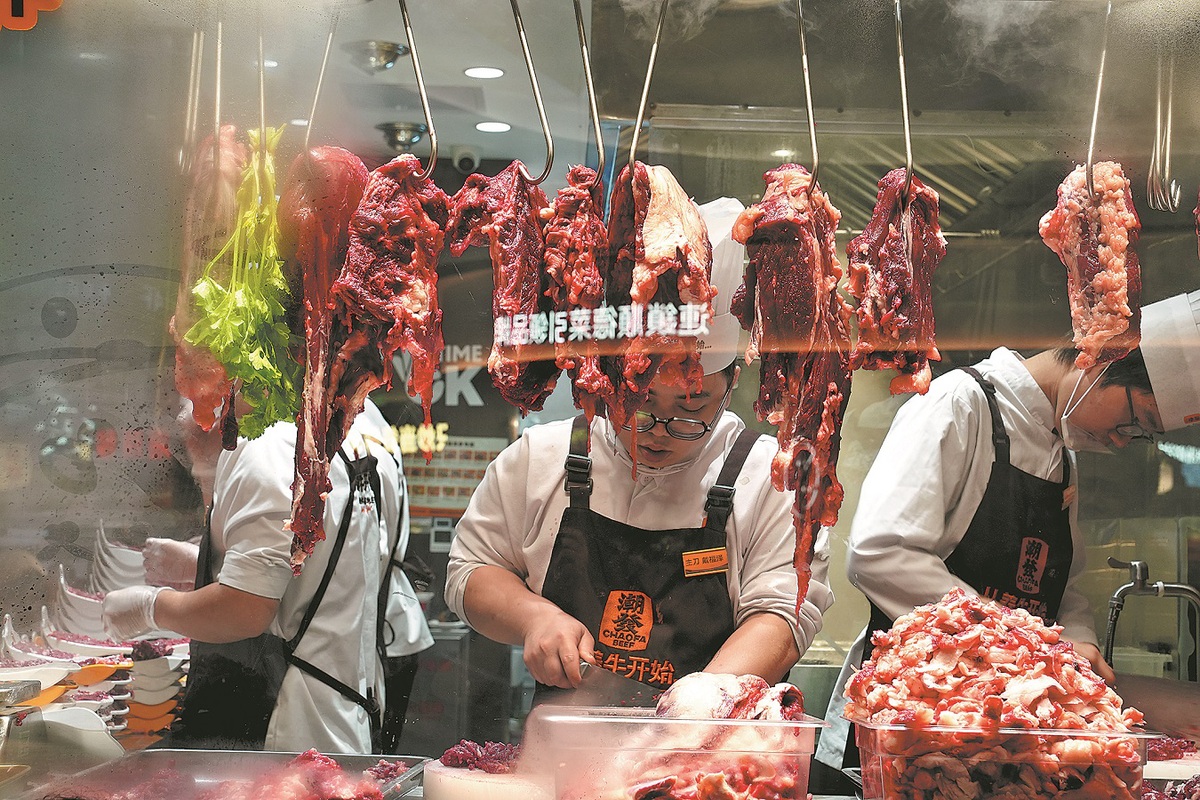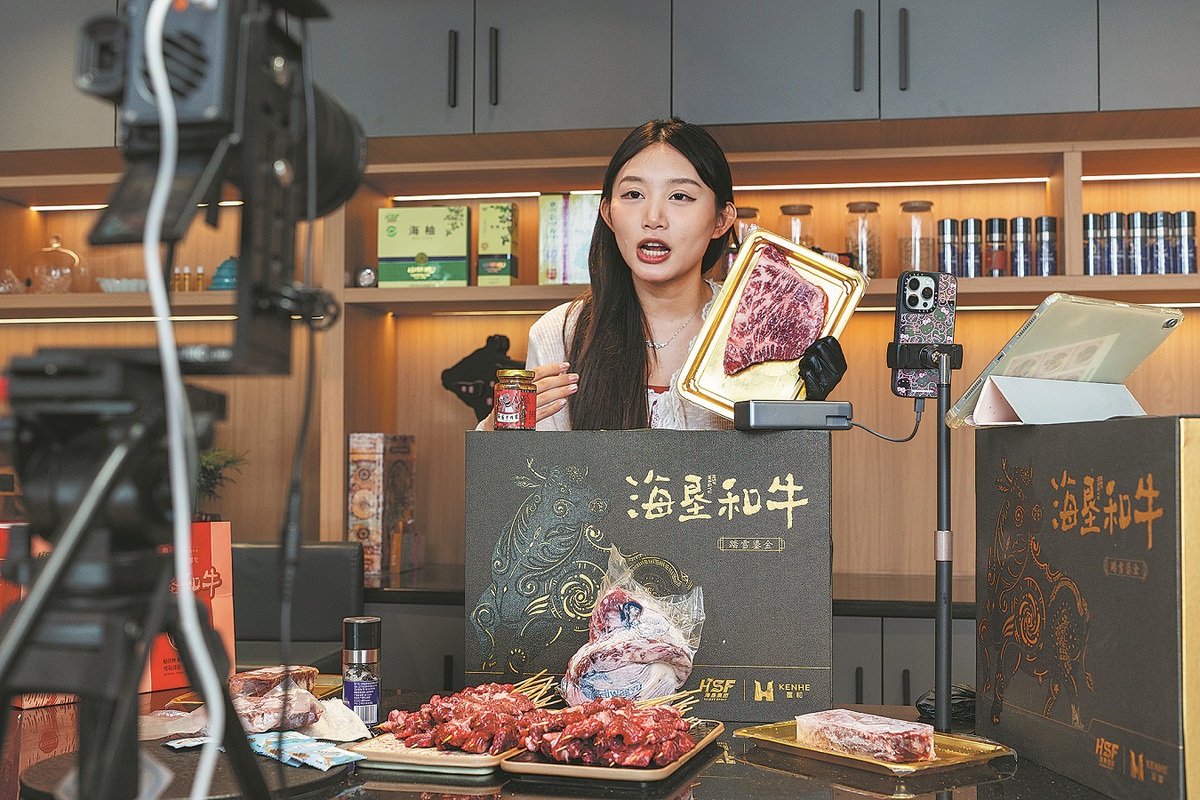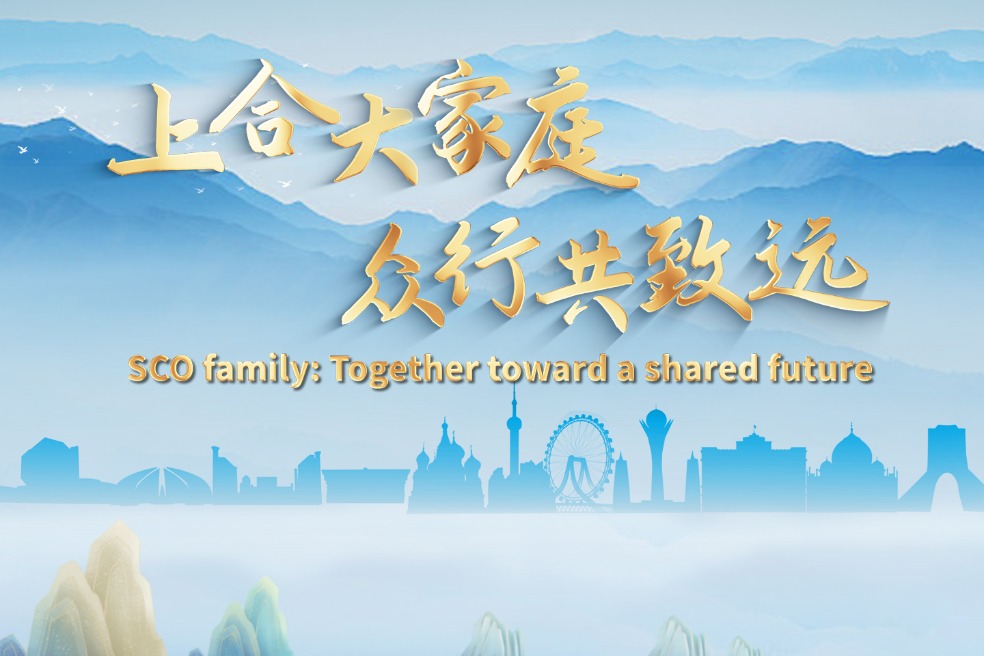Beef production hits its prime on grasslands
Eco-sensitive methods in Inner Mongolia protecting environment, providing higher-quality meat


Unique strengths
Dong is among more than 3,000 local herdsmen whose lives have been transformed by modern cattle farming since Zhang Wen entered the scene.
Through a system of contract management plus performance pay, a herdsman can now earn between 120,000 and 180,000 yuan a year, lifting their families out of poverty, said Zhang, who runs the Inner Mongolia Hesige Agriculture and Animal Husbandry Technology Co in Xiliin Gol League.
Approximately 98 percent of farmers and herders his company now employs are ethnic Mongolians who used to come from low-income households.
In 2007, Zhang arrived at the Ulgai Grassland, northeast of Xiliin Gol League, where the grassland coverage is one of the biggest in the world.
At the time, decades of overgrazing had left vast areas barren, with dark sand exposed where grass once thrived, said Zhang, aged in his 70s, and born and bred on the grassland. "Growing up on the grasslands gives you a deep sensitivity to ecological damage," Zhang said.
When he officially took over 400,000 mu (26,666 hectares) of pasture in 2008, his first decision was a bold one.
"We closed off the land for six years, allowing vegetation to recover undisturbed," he said.

What was once a degraded expanse, has returned to a vibrant green area. After multiple study trips abroad, Zhang settled on large-scale breeding of Angus cattle, a breed prized globally for its adaptability and premium marbled beef.
He believes the natural grasslands have unique strengths in developing animal husbandry.
"Our pastures are not just grass, but home to over 100 native plant species, many of which are traditional Chinese medicinal herbs," Zhang said.
These plants, he said, act as natural supplements for the cattle, strengthening their immunity and reducing the need for antibiotics.
From the outset, Zhang intended to cultivate a homegrown system that fits the country's ecology, and the Chinese palate and consumption patterns.
He insists that cattle fare better when being raised free-range rather than confined. "People aren't happy when walled in — neither are cows," Zhang said, adding that allowing the herds to roam on the grasslands promotes animal welfare and reduces disease.
To maintain herd health, his team has imported high-quality vaccines and enforced strict biosecurity, practicing antibiotic-free farming.
Additionally, Zhang has kept the scale of farming in check. He only raises just over 10,000 head of cattle to ease grazing pressure on the grasslands.
He also has his team grow corn and oats on cropland, combining planting and grazing cycles to protect the fragile steppe. "It ensures the land's sustainability and long-term strength of our farming business," Zhang said.
























